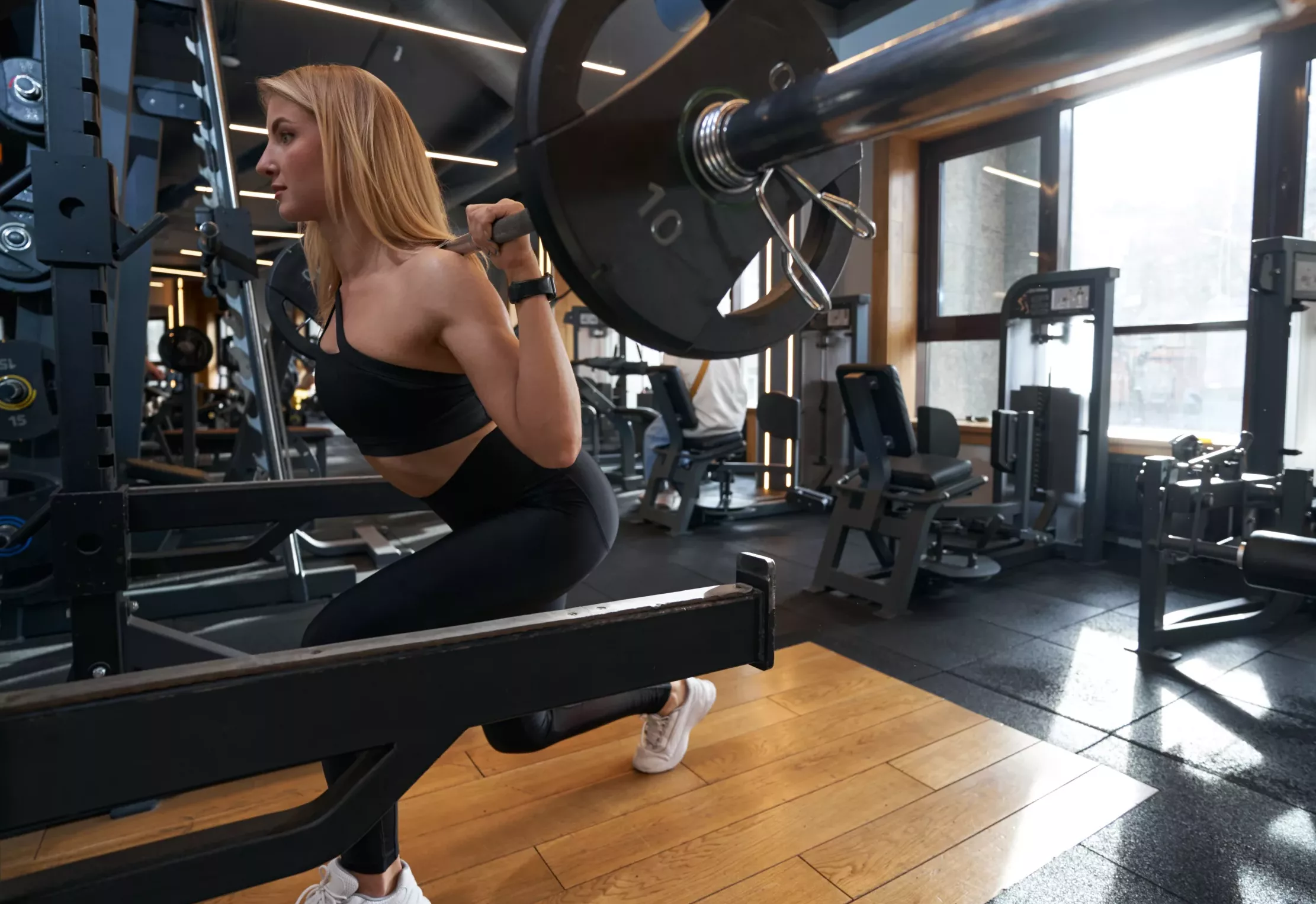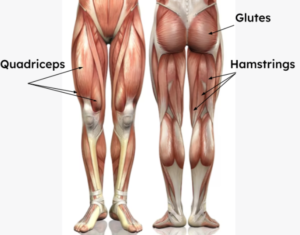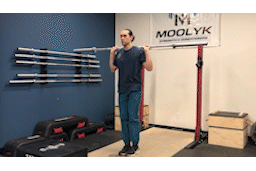
Exercise Technique: Barbell Reverse Lunge
The barbell reverse lunge stands out as an excellent lower body exercise in the vast world of resistance training. It is one of many exercises designed to enhance performance, strength, and agility. The barbell reverse lunge movement is ideal for those looking to elevate their exercise by offering a unique blend of balance, strength, and coordination.
This article will highlight the proper form and benefits of the barbell reverse lunge.
Key Muscles for Barbell Reverse Lunge
The barbell reverse lunge is a targeted movement engaging essential muscle groups:
- Gluteus Maximus (Glutes): The primary driver of hip extension.
- Quadriceps: Critical for knee extension, these front-thigh muscles are vital for your lunge.
- Hamstrings: Situated at the back of the thigh, they are crucial for knee flexion and hip extension.

Lower extremity muscles.
Image 1 by kjpargeter and Image 2 by kjpargeter on Freepik
Exercise Execution of Barbell Reverse Lunge
To capitalize on the full benefits of the barbell reverse lunge, focus on the technique across two key phases:
The Descent (backward movement):
- Start by positioning the barbell at the base of your neck, ensuring it’s centered on your back.
- Stand with your feet spaced between hip and shoulder width, pointing forward.
- Elevate your chest and brace your core by tensing your abdominal muscles.
- Initiate the movement by stepping straight back with one foot, keeping the other foot firmly planted.
- As you step back, maintain a vertical alignment to prevent any sideways shift that could disrupt your balance.
- Once stable, bend your front knee until the back knee is almost touching the ground. If you struggle to achieve this depth, tight hip flexors might be the culprit.
The Ascent (forward movement):
- Begin by shifting your weight forward and powerfully pushing off the ground with your back leg, while straightening the front knee and hip.
- Maintain your core stability during this phase.
- Aim to return to the starting position without letting the back foot touch the ground.
- Once back in the initial stance, with weight evenly distributed between both feet, pause to regain balance.
- For the next repetition, switch the leg that steps backward.
 Performing alternating barbell reverse lunge movement.
Performing alternating barbell reverse lunge movement.
Boost Athletic Performance with Barbell Reverse Lunges
Incorporating the barbell reverse lunge into your routine is an excellent way to enhance athletic performance as it engages essential muscle groups such as the glutes, quadriceps, and hamstrings.
By alternating legs in the with the barbell reverse lunge movement, it can improve strength, balance, and coordination.
Safely Master the Barbell Reverse Lunge with Professional Guidance
To ensure injury prevention and optimize your training experience, it’s crucial to approach the barbell reverse lunge with a strong focus on proper form and safety.
It is an exercise best performed with the guidance of a professional, especially for those perfecting their technique or just beginning their strength training journey.
A professional can identify potential issues such as tight hip flexors which can prevent proper execution of the barbell reverse lunge.
Connect Physiotherapy & Exercise in Edmonton can help prioritize your performance and well-being with custom coaching which can include guidance and instruction of the barbell reverse lunge.
References
Graham, J.F. (2011). Exercise: Barbell Backward Lunge. Strength and Conditioning Journal. DOI: 10.1519/SSC.0b013e31820e6a7c.

